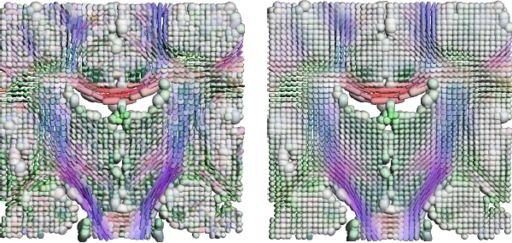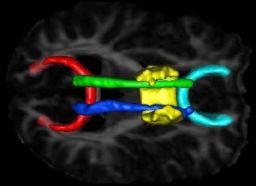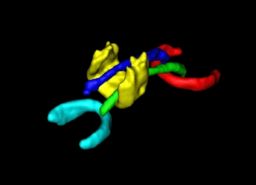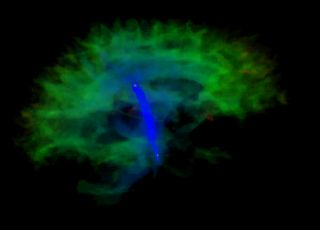Difference between revisions of "Projects:DTIVolumetricWhiteMatterConnectivity"
| Line 49: | Line 49: | ||
= Key Investigators = | = Key Investigators = | ||
| + | Tom Fletcher, Ran Tao, Won-Ki Jeong, Ross Whitaker | ||
= Publications = | = Publications = | ||
| − | + | * PT Fletcher, R Tao, W-K Jeong, RT Whitaker, A volumetric approach to quantifying region-to-region white matter connectivity in diffusion tensor MRI, IPMI 2007, pp. 346-358. | |
| − | |||
| − | * | ||
| − | |||
| − | |||
[http://www.na-mic.org/Special:Publications?text=Projects%3ADTIVolumetricWhiteMatterConnectivity&submit=Search&words=all&title=checked&keywords=checked&authors=checked&abstract=checked&sponsors=checked&searchbytag=checked| NA-MIC Publications Database] | [http://www.na-mic.org/Special:Publications?text=Projects%3ADTIVolumetricWhiteMatterConnectivity&submit=Search&words=all&title=checked&keywords=checked&authors=checked&abstract=checked&sponsors=checked&searchbytag=checked| NA-MIC Publications Database] | ||
Revision as of 22:54, 9 December 2007
Home < Projects:DTIVolumetricWhiteMatterConnectivityBack to NA-MIC_Collaborations, Utah Algorithms
Contents
DTI Volumetric White Matter Connectivity
- 'Differential Geometry' We will provide methods for computing geodesics and distances between diffusion tensors. Several different metrics will be made available, including a simple linear metric and also a symmetric space (curved) metric. These routines are the building blocks for the routines below.
- 'Statistics' Given a collection of diffusion tensors, compute the average and covariance statistics. This can be done using the metrics and geometry routines above. A general method for testing differences between groups is planned. The hypothesis test also depends on the underlying geometry used.
- 'Interpolation' Interpolation routines will be implemented as a weighted averaging of diffusion tensors in the metric framework. The metric may be chosen so that the interpolation preserves desired properties of the tensors, e.g., orientation, size, etc.
- 'Filtering' We will provide anisotropic filtering of DTI using the full tensor data (as opposed to component-wise filtering). Filtering will also be able to use the different metrics, allowing control over what properties of the tensors are preserved in the smoothing. We have also developed methods for filtering the original diffusion weighted images (DWIs) that takes the Rician distribution of MR noise into account (see MICCAI 2006 paper below).
- 'Relation to other NA-MIC projects:'
- DTI processing: filtering and interpolation are an input to further analysis, such as UNC fiber tract analysis and MGH atlas building.
- DTI statistics: (UNC) will be used in the analysis of tensor data along fiber tracts.
Description
- Developed a Slicer module for our DT-MRI Rician noise removal during the 2007 Project Half Week. Also enhanced the method by including an automatic method for determining the noise sigma in the image.
- Developed prototype of DTI geometry package. This includes an abstract class for computing distances and geodesics between tensors, while derived classes can specify the particular metric to use. Current implemented subclasses are the basic linear metric and the symmetric space metric.
- Developed prototype of DTI statistical package. A general class has been developed for computing averages and principal modes of variation of tensor data. The statistics class can use any of the metrics described above.
- We have begun work on a general method for hypothesis testing of differences in two diffusion tensor groups. This method works on the full six-dimensional tensor information, rather than derived measures. The hypothesis testing class can also use any of the different tensor metrics.
- Participated in the Programmer's Week (June 2005, Boston). During this week the DTI statistics code was developed and added to the NA-MIC toolkit. See our Progress Report (July 2005). We are also involved in the Statistical Feature Analysis Framework project with Martin Styner (UNC) and Jim Miller (GE).
We have developed a PDE-based approach to white matter connectivity from DTI that is founded on the principal of minimal paths through the tensor volume. Our method computes a volumetric representation of a white matter tract given two endpoint regions. We have also developed statistical methods for quantifying the full tensor data along these pathways, which should be useful in clinical studies using DT-MRI. This work has been accepted to IPMI 2007.
Effecient GPU implementation: We have recently implemented a fast solver for the volumetric white matter connectivity using graphics hardware, i.e., the Graphics Processing Unit (GPU). This method takes advantage of the massively parallel nature of modern GPUs and runs 50-100 times faster than a standard implementation on the CPU. The fast solver allows interactive visualization of white matter pathways. We have developed a user interface in which a user can select two endpoint regions for the white matter tract of interest, which is typically computed and displayed within 1-3 seconds. This work has been submitted to VIS 2007.
Software
The diffusion tensor statistics code is now part of the NA-MIC toolkit. To get the code, check out the NA-MIC SandBox (see instructions here) -- our code is in the "DiffusionTensorStatistics" directory.
Key Investigators
Tom Fletcher, Ran Tao, Won-Ki Jeong, Ross Whitaker
Publications
- PT Fletcher, R Tao, W-K Jeong, RT Whitaker, A volumetric approach to quantifying region-to-region white matter connectivity in diffusion tensor MRI, IPMI 2007, pp. 346-358.



